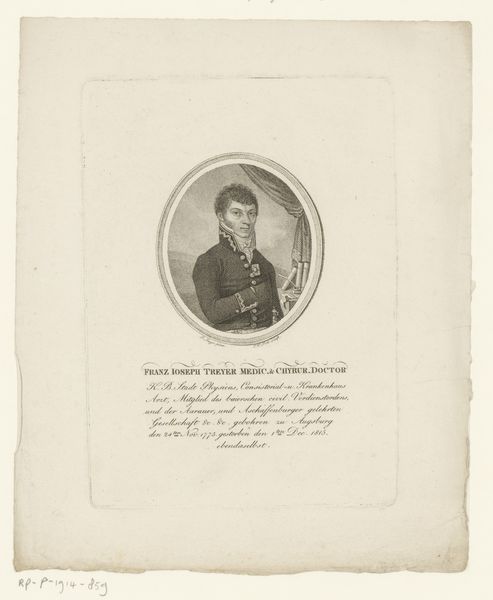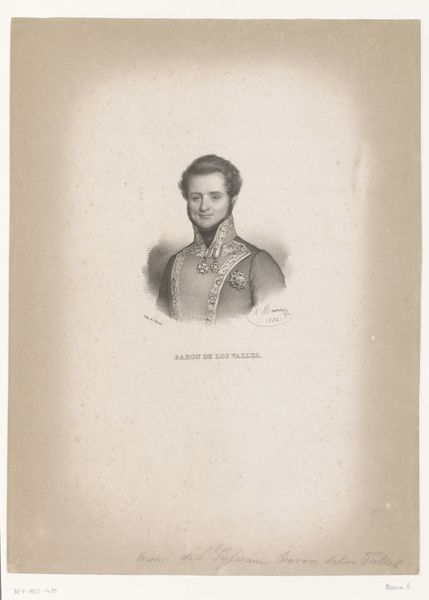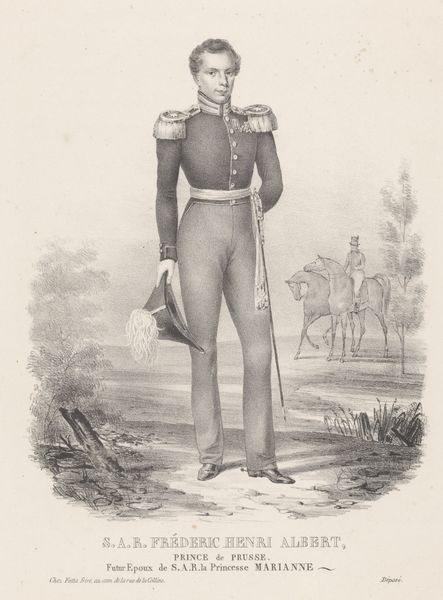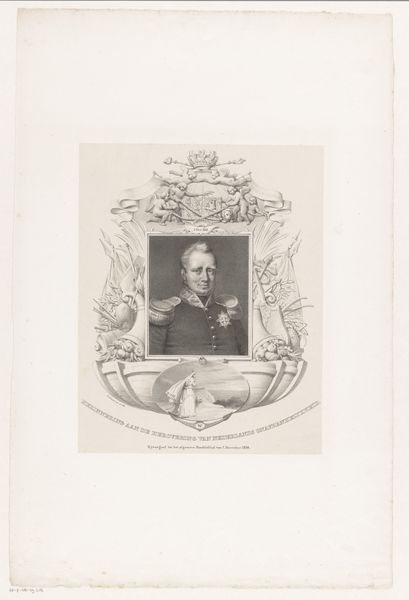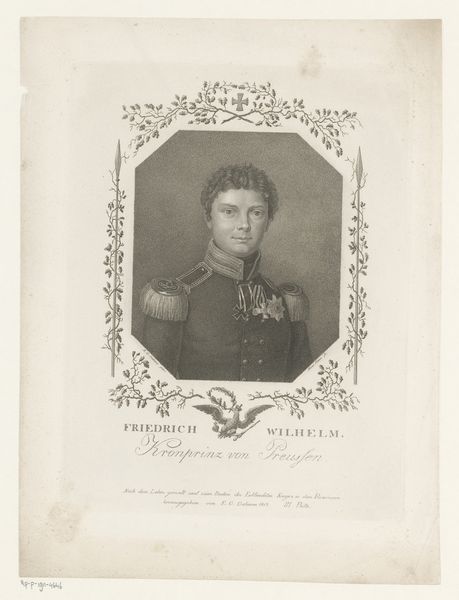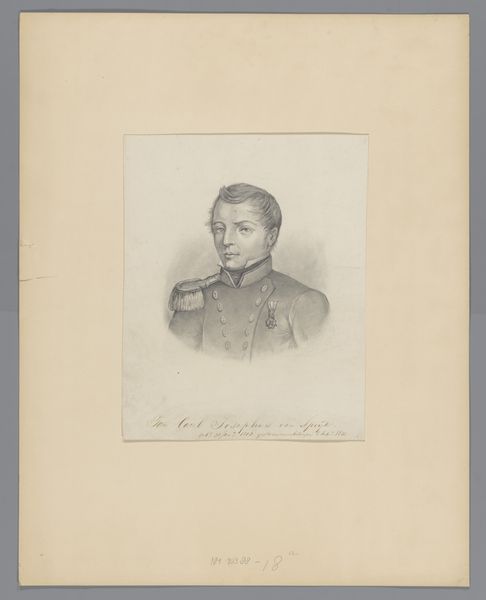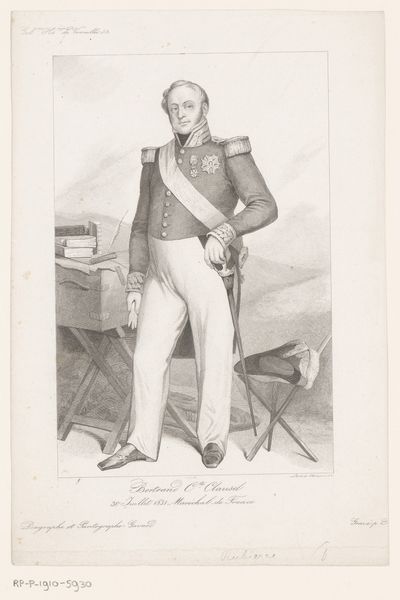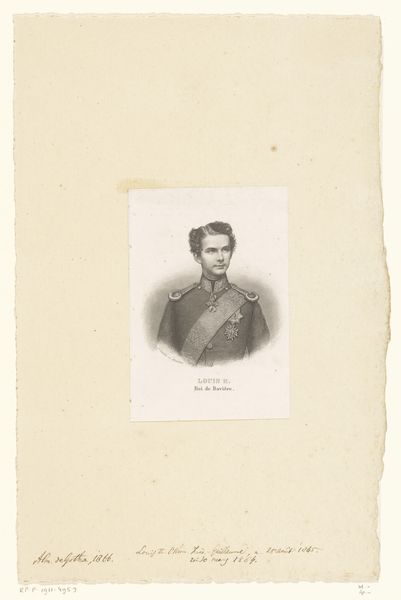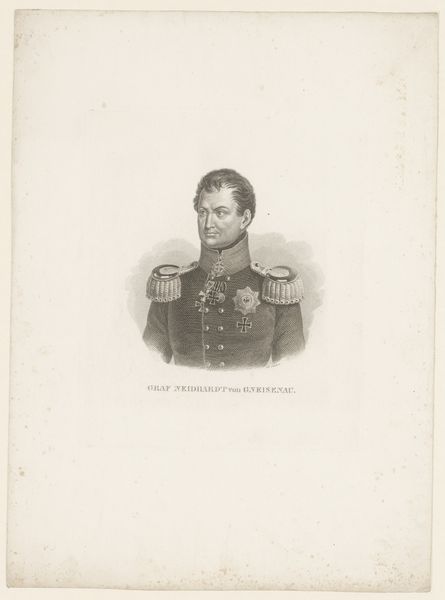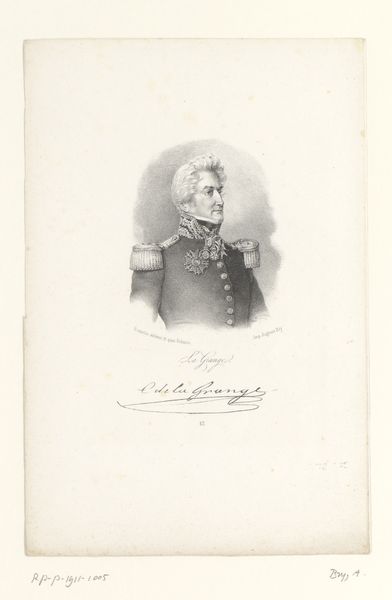
lithograph, print
#
portrait
#
lithograph
# print
#
romanticism
#
19th century
#
history-painting
Dimensions: height 305 mm, width 239 mm
Copyright: Rijks Museum: Open Domain
Curator: This lithograph from 1831 or 1832 portrays Jan Carel Josephus van Speijk. The artist, Joannes Antonius Augustinus Pluckx, captures a certain ideal of Dutch heroism here, wouldn’t you agree? Editor: Absolutely, the portrait has this almost ethereal quality, especially set against that background of the ship in distress. It definitely leans into romantic notions of sacrifice and nationhood. Curator: Yes, observe how Speijk is framed. An oval wreath surrounds his likeness, topped with military regalia. The symbols themselves are heavy: banners, weaponry… it all contributes to the mythos. He is forever enshrined. Editor: And what's interesting is that while the portrait is very proper, even serene, beneath him we see this turbulent sea with a ship sinking. The contrast tells the story. I think that shipwreck anchors his image to this pivotal event. Curator: Exactly. This moment in history becomes attached to Van Speijk through the intentional composition of the lithograph. This imagery cemented his persona as a martyr for the Netherlands. The radiant lighting around his head furthers that. Editor: It also seems that framing a historical event using lithography had a democratizing effect, mass producing a nationalist narrative and making it accessible to the broader public. A single image, endlessly repeatable. What a potent use of art! Curator: A fascinating point. His stern gaze and erect posture exude duty and determination. The emblems he bears—the buttons, epaulettes and medals on his uniform—become integral symbols of courage and honor. It all plays its part. Editor: Thinking about visual language, even something like the poem beneath the image further propagates this image of courage and self-sacrifice, and, to me, reinforces dangerous nationalist ideals of that era. Curator: Ultimately, I suppose it makes you reflect on how we continually recast and reinterpret historical figures through imagery and symbol. Editor: And how vital it is that we engage critically with those symbols, considering their impact then and now. The story isn't over.
Comments
No comments
Be the first to comment and join the conversation on the ultimate creative platform.
